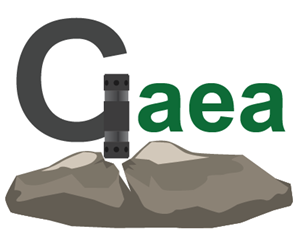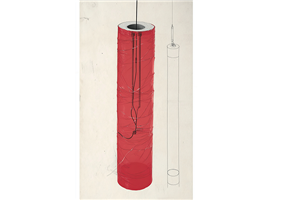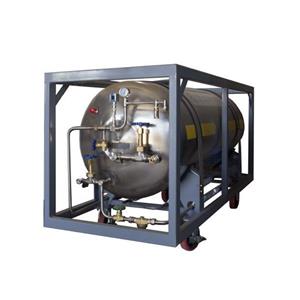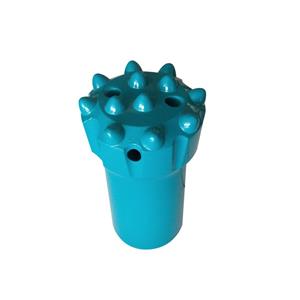Understanding down-the-hole drill bits
1. Introduction of DTH Drill Bits DTH drills are divided into two series, high wind pressure and low wind pressure. Using high-quality raw materials and advanced production technology, a series of high-quality down-the-hole drills are produced. It is widely used in earthwork engineering, mining, water well drilling, construction engineering, etc.
Nowadays, high-pressure down-the-hole drills currently adopt four main end face design forms: convex end face, flat end face, concave end face and deep concave center end face. For cemented carbide, button teeth, spring teeth, or the method of tooth distribution shared by both buttons and spring teeth are often used.

1. Convex end face type: This type of drill has two types, single boss and double boss end. The latter is mainly used for DTH drills with larger diameters. Convex-faced DTH drill bits can maintain a high drilling rate when drilling medium-hard and hard abrasive rocks, but the flatness of the hole is poor, and it is not suitable for drilling rocks with high blast hole flatness requirements. engineering.
2. End face plane type: The drill bit of this shape is more sturdy and durable, suitable for drilling hard and extremely hard rocks, and also suitable for drilling medium hard and soft rocks with low requirements for blast hole straightness.
3. End face plane type: There is a conical recessed part on the end face of the drill bit of this shape, which forms a slight nucleation effect during the rock drilling process to maintain the centering performance of the drill bit, and the drilled blasthole has a better straight line. This kind of drill bit has good powder discharge effect and fast drilling speed. It is the most used down-the-hole drill bit on the market.
4. Deep concave center type on the end surface: The drill bit of this shape is evolved from the same type of button bit, and the center of the end surface of the drill bit has a deep concave center part. It is used for nucleation in the process of rock drilling, to ensure the straightness of the blast hole when drilling deep holes. It is only suitable for drilling soft rock and medium-hard rock.
2. Instructions
1. Choose the down-the-hole drill bit according to the rock condition (hardness, abrasiveness) and the type of drilling rig (high wind pressure, low wind pressure). Different forms of alloy teeth and tooth arrangement methods are suitable for drilling different rocks. Choosing the right down-the-hole drill bit is the prerequisite for obtaining the best use effect;
2. When installing the down-the-hole drill bit, place the bit gently into the drill sleeve of the down-the-hole impactor, and don’t hit it hard to avoid damaging the shank of the drill bit. Or the drill sleeve;
3. During the rock drilling process, ensure that the air pressure of the down-the-hole drill is sufficient. If the impactor works intermittently, or the powder discharge from the blast hole is not smooth, check the compressed air system of the down-the-hole drill to ensure that there is no slag in the hole during the drilling process;
4. If metal objects are found to fall into the hole, it should be timely Use a magnet to pull it out or take it out by other methods to avoid damaging the drill bit;
5. When replacing the drill bit, pay attention to the size of the drilled blast hole. If the diameter of the drill bit is excessively worn, but the blast hole is not well drilled, do not replace the drill bit to avoid sticking. You can use old drill bits that have been used and have roughly the same wear diameter to complete the job.





